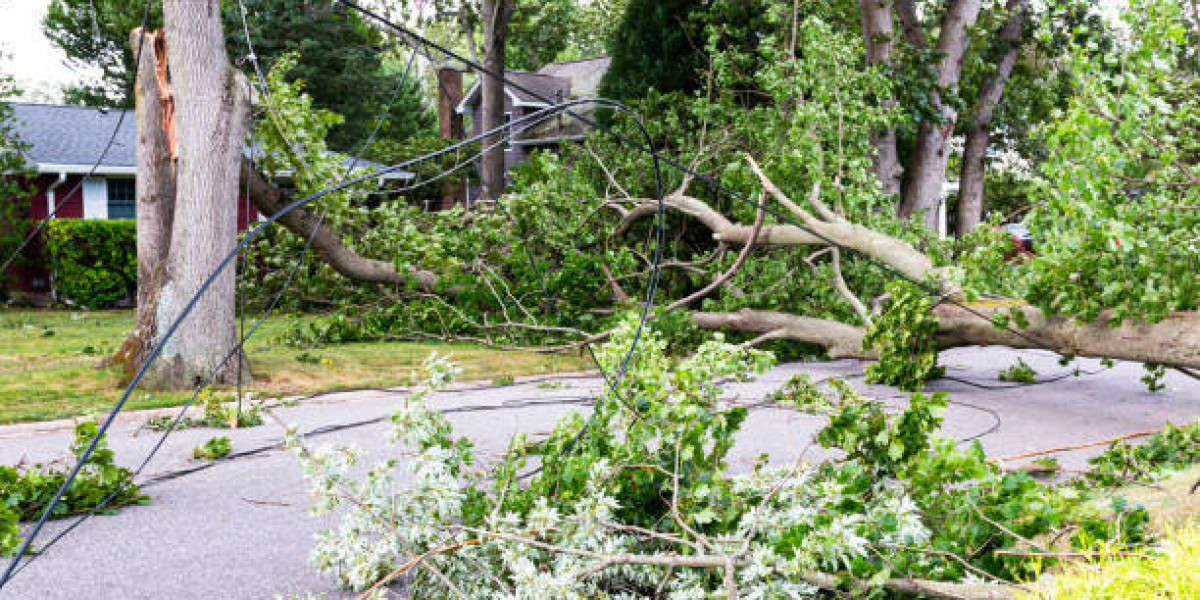From fallen trees to damaged roofs, the cleanup process requires careful planning and execution to ensure safety and efficiency. In this comprehensive, we'll walk you through the essential steps and precautions for handling storm damage cleanup effectively. Discover expert tips and techniques to streamline the restoration process and restore your property to its former glory.
Understanding the Scope of Storm Damage
Understanding the scope of storm damage involves conducting a thorough assessment of the affected property to identify all areas requiring attention. This includes inspecting for structural damage, debris accumulation, and potential safety hazards. By comprehensively evaluating the extent of the damage, homeowners can prioritize cleanup efforts, allocate resources effectively, and ensure that no critical issues are overlooked. This initial step lays the foundation for a successful and efficient storm damage cleanup process, enabling homeowners to address problems promptly and minimize further damage to their property.
Safety First
Storm cleanup can pose significant risks, including injuries from falling debris, electrocution, and exposure to hazardous materials. Put safety first by donning safety gear including goggles, gloves, and sturdy shoes. Exercise caution around damaged structures and unstable debris, and avoid contact with electrical equipment or standing water. If in doubt, consult with professionals who specialize in storm damage cleanup.
Securing the Area
Before initiating cleanup efforts, focus on securing the affected area to prevent further damage or injuries. Clear debris from walkways and driveways to facilitate access and reduce tripping hazards. Erect barriers or caution tape around hazardous zones, and restrict access to areas with unstable structures or potential safety risks. By establishing a safe perimeter, you can minimize the likelihood of accidents during the cleanup process.
Removing Debris
One of the primary tasks in storm damage cleanup is removing debris from your property. Start by clearing fallen branches, leaves, and other organic matter using rakes and leaf blowers. Next, tackle larger debris such as tree limbs and damaged building materials using chainsaws, hand saws, or heavy-duty equipment. Exercise caution when operating machinery, and enlist the help of trained professionals for complex or hazardous removal tasks.
Addressing Structural Damage
Inspect your property for any structural damage caused by the storm, such as compromised roofs, broken windows, or collapsed walls. Prioritize repairs to prevent further deterioration and safeguard your home against the elements. Temporarily cover damaged areas with tarps or boards to prevent water intrusion and protect against additional damage. For extensive structural repairs, consult with qualified contractors or building inspectors to ensure compliance with safety standards and building codes.
Restoring Landscaping
Storms can wreak havoc on your landscaping, uprooting trees, and damaging plants and shrubs. Assess the extent of the damage to your outdoor space and prioritize cleanup efforts accordingly. Remove fallen trees and branches, and replant or trim damaged vegetation to promote healthy growth. Consider consulting with arborists or landscaping professionals for assistance with tree removal and restoration projects, especially for large or hazardous trees.
Handling Water Damage
Excessive rain or flooding can lead to water damage inside your home, compromising its structural integrity and creating ideal conditions for mold growth. Thoroughly inspect affected areas for signs of water intrusion, such as damp walls, soggy carpets, or musty odors. Extract standing water using pumps or wet/dry vacuums, and promote ventilation to aid in drying out the space. Address any underlying issues such as leaks or drainage problems to prevent future water damage.
Final Cleanup and Restoration
Once the bulk of the cleanup is complete, focus on the final touches to restore your property to its pre-storm condition. Sweep and mop indoor areas to remove any remaining debris or dirt, and sanitize surfaces to eliminate mold and bacteria. Repair damaged fixtures, replace broken windows, and repaint walls as needed to enhance aesthetic appeal and functionality. Don't forget to inspect your property regularly for any hidden damage or lingering issues that may require attention.
Conclusion
Storm damage cleanup is a challenging endeavor that requires careful planning, attention to detail, and a focus on safety. By following the steps outlined in this, you can navigate the cleanup process with confidence and efficiency, restoring your property to its former glory. Remember to prioritize safety at all times, and don't hesitate to seek professional assistance for complex or hazardous cleanup tasks. With proper preparation and proactive measures, you can overcome the challenges of storm damage and emerge stronger than before.



